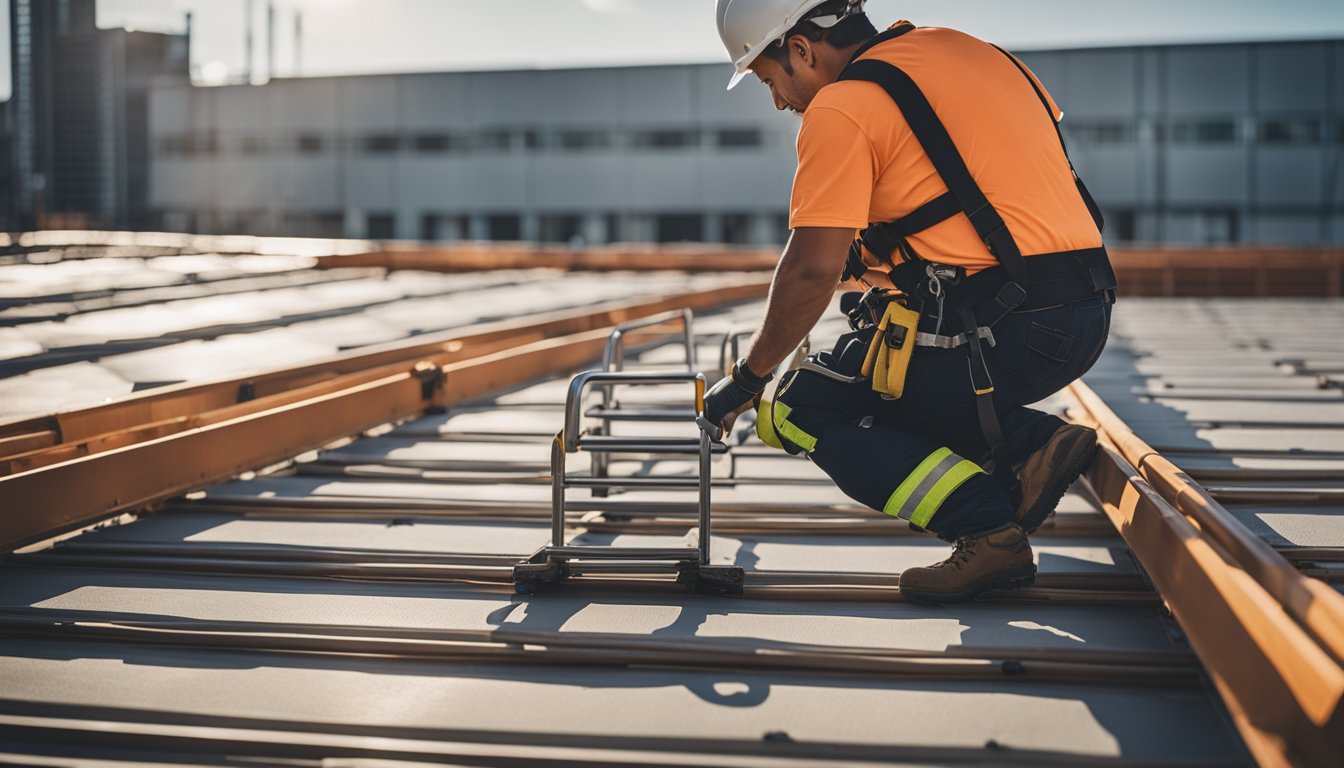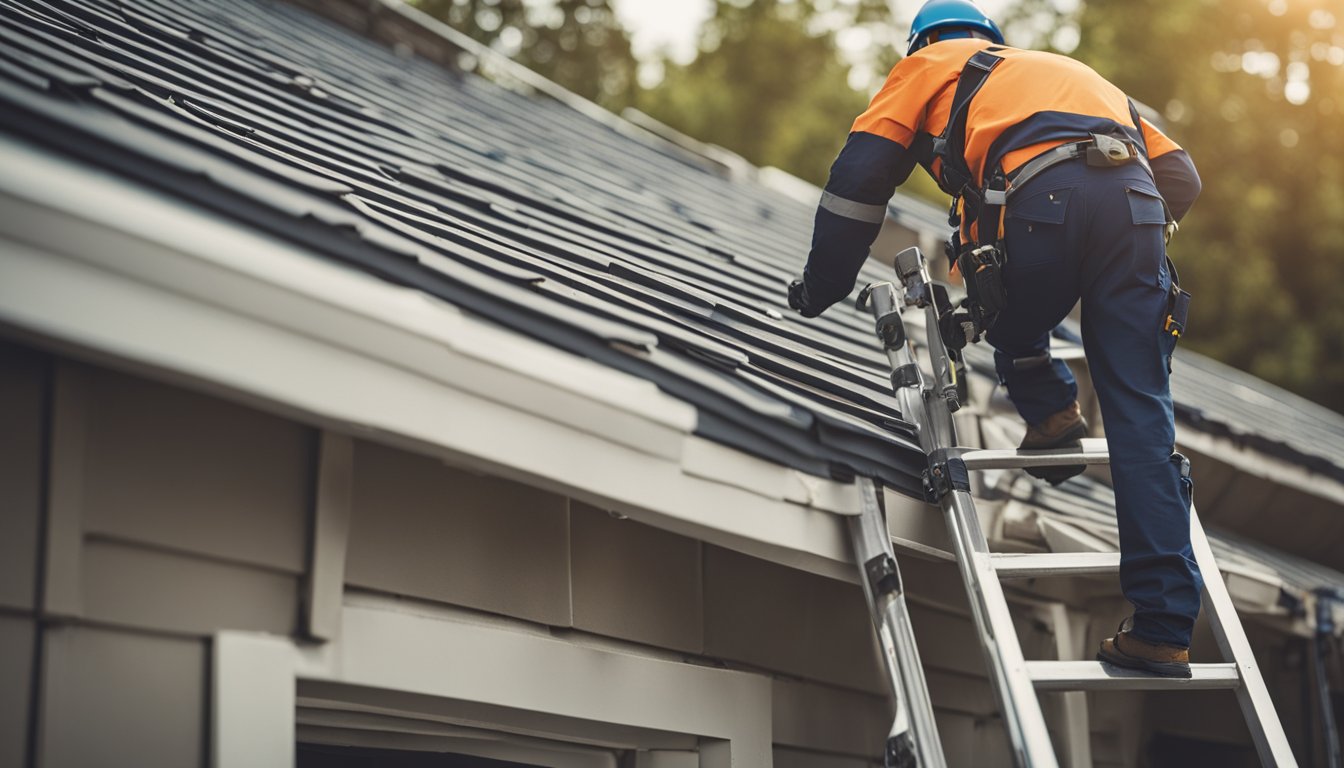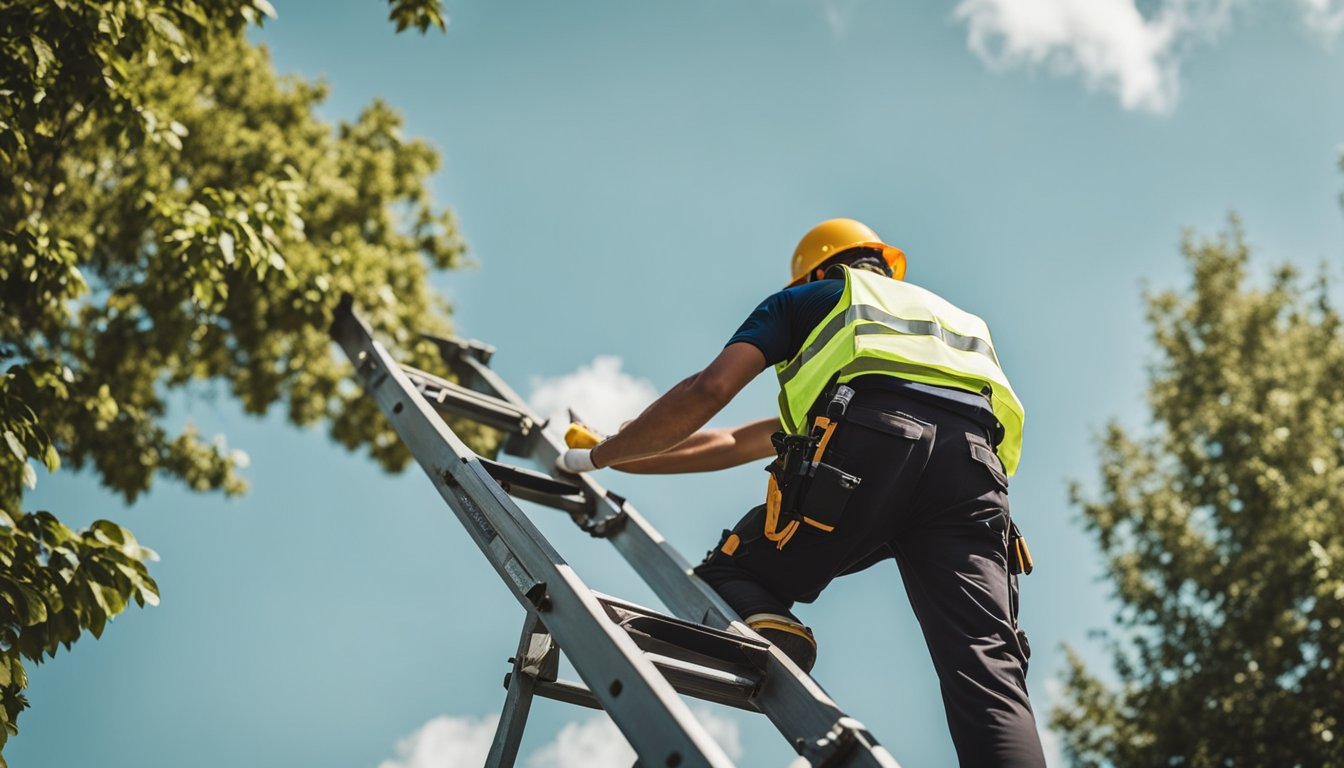Late updated: 13 Jul 2024 13:07
Written by: Oliver Bennett
Essential Roof Safety Tips For UK Homeowners: Protect Your Home and Stay Safe
Maintaining roof safety is crucial for homeowners in the UK. Ensuring your roof is secure not only protects your property but also safeguards your family from potential hazards. With our notoriously unpredictable weather, from heavy rain to strong winds, having a well-maintained and safe roof is more critical than ever.

We often overlook the importance of proper equipment when addressing roof safety. Simple items like a sturdy ladder, non-slip footwear, and fall protection systems are essential for safe roof maintenance. Regular inspections can prevent common issues such as leaks and structural damage, saving homeowners from costly repairs.
In areas prone to overhanging trees and heavy leaf fall, keeping gutters clear is vital. Blocked gutters can lead to water damage and increased risks when accessing your roof. By staying proactive with these safety measures, we can ensure our homes remain safe and secure year-round.
Key Takeaways
- Regular roof inspections are essential for identifying potential hazards.
- Using proper safety equipment can prevent accidents.
- Maintaining clear gutters helps avoid water damage and related risks.
Understanding Roof Safety and Necessary Equipment
Ensuring roof safety requires a thorough assessment of risks and the right equipment to mitigate those risks. We will explore the key points to keep in mind when working on your roof and the essential gear you must have.
Assessing the Risks Associated with Roof Work
When working on a roof, it's critical to evaluate the potential hazards. Firstly, consider the height of the roof. Working at any considerable height increases the risk of serious injury from falls. Make sure you identify unstable surfaces, weak spots, or areas where the roofing material might give way under pressure.
Weather conditions also play a significant role. Wet, windy, or icy conditions can make the roof slippery and unpredictable. Always check the weather forecast before undertaking any roof work.
Another important aspect involves access points. Proper and secure ladders or scaffolding provide safer access. Ensuring these are in good condition and correctly positioned can prevent accidents even before starting the actual roof work.
Essential Safety Equipment for Homeowners
Having the right safety equipment can be the difference between a secure job and a hazardous one. A safety harness with a lanyard provides critical fall protection by arresting falls before they can cause severe injury.
Sturdy ladders are essential. Make sure the ladder extends at least one metre above the roof edge and is placed on firm, stable ground. Ladder stabilisers can add extra support and reduce the risk of slipping.
Gloves are necessary to protect your hands from abrasions and cuts, while eye protection shields your eyes from debris and UV rays.
Guardrails offer physical barriers around the roof edge, providing an extra level of fall protection. These can be combined with other equipment like roof anchors for enhanced safety.
Lastly, inspect all safety gear for wear and damage before use. Faulty equipment can lead to accidents, defeating the purpose of safety measures entirely.
By following these guidelines, we can ensure a safer environment while conducting roof work, significantly reducing the risk of injury.
Preventative Measures and Regular Maintenance

Taking care of your roof requires both proactive measures and scheduled upkeep to ensure durability and safety. By conducting regular inspections and addressing common issues promptly, we can prevent many potential problems.
Conducting Regular Inspections and Maintenance
Regular roof inspections are essential to catch issues early. We should examine the roof at least twice a year, ideally during spring and autumn. This helps identify wear and tear caused by winter weather and prepare the roof for the coming seasons. Inspect for broken tiles, cracks, moss growth, and blocked gutters. A blocked gutter can lead to water build-up, resulting in a leaking roof. Paying close attention to roof flashing and seals around chimneys and vents is also crucial.
Combining visual inspections with simple tools enhances the process. For instance, using a garden hose to test for proper drainage can reveal potential blockages. Checking the attic for any signs of water stains or mould also helps assess the roof's condition from the inside. Not every issue requires professional intervention, but serious concerns like significant damage or structural problems should be addressed by experts.
Addressing Common Roof Issues Timely
Common roof problems, if left unattended, can escalate quickly. One frequent issue is the accumulation of leaves and debris in gutters, leading to clogged gutters and downspouts. Regularly cleaning these elements ensures rainwater is directed away from the home's foundation. Overhanging branches should be trimmed to prevent damage from falling debris and to reduce moss and algae growth, which thrive in shaded areas.
Moss and algae can be particularly damaging because they retain moisture, weakening roofing materials. They should be removed promptly using suitable cleaning agents. Flashing around chimneys, vents, and skylights must also be examined for looseness or damage, as faulty flashing can lead to leaks. Ensuring proper ventilation in the attic is essential for maintaining the roof’s structural integrity, especially in extreme weather conditions.
By incorporating these measures into our regular home maintenance routine, we can extend the life of our roofs and mitigate potential damage effectively.
Frequently Asked Questions

Roof safety is paramount for UK homeowners. Here, we address several common questions regarding roof work, maintenance, and safety regulations to ensure you are well-informed.
What precautions should be taken when working at height on roofs in the UK?
Working at height poses significant risks. It is essential to use proper safety equipment, such as harnesses and guardrails. Always conduct a risk assessment before starting work. Securing ladders and ensuring they are on stable ground can prevent falls. Training and adherence to Health and Safety Executive (HSE) guidelines are crucial for ensuring safety.
What are the best practices for maintaining a roof in the UK to ensure its longevity?
Regular inspections are key. Look for broken or missing tiles, moss growth, and blockages in gutters. Cleaning gutters twice a year prevents water damage. Trimming overhanging branches can reduce debris accumulation. Professional inspections every few years help identify and address issues before they escalate.
Is a licence required for roofing contractors in the UK, and how does one obtain it?
Roofing contractors in the UK do not need a specific licence but must comply with health and safety regulations. Many contractors opt for accreditation from organisations like the National Federation of Roofing Contractors (NFRC). Accreditation involves meeting industry standards and can provide peace of mind for homeowners.
What is the safest method for accessing the roof of a residential property?
Using scaffolding provides the most stable and secure method for accessing a roof. If scaffolding is not available, a secured ladder with a stabiliser is a good alternative. Always inspect the ladder condition before use and ensure it extends at least three feet above the landing point to provide safe access.
Can you outline the regulations governing the use of safety equipment for roof work in the UK?
The HSE outlines strict regulations for roof work safety. Employers must provide appropriate fall protection systems, such as guardrails, safety nets, or personal fall arrest systems. Regular equipment inspections are mandatory to ensure their effectiveness. Training employees on the proper use of safety gear is also required by law.
What routine checks can homeowners carry out to ensure their roof remains in a safe condition?
Inspecting the roof twice a year is recommended. Look for cracked or missing tiles, signs of water damage, and wear around chimneys and skylights. Clearing debris from gutters and ensuring downspouts are unobstructed help maintain proper water flow. Addressing minor issues promptly can prevent larger, more costly repairs.
